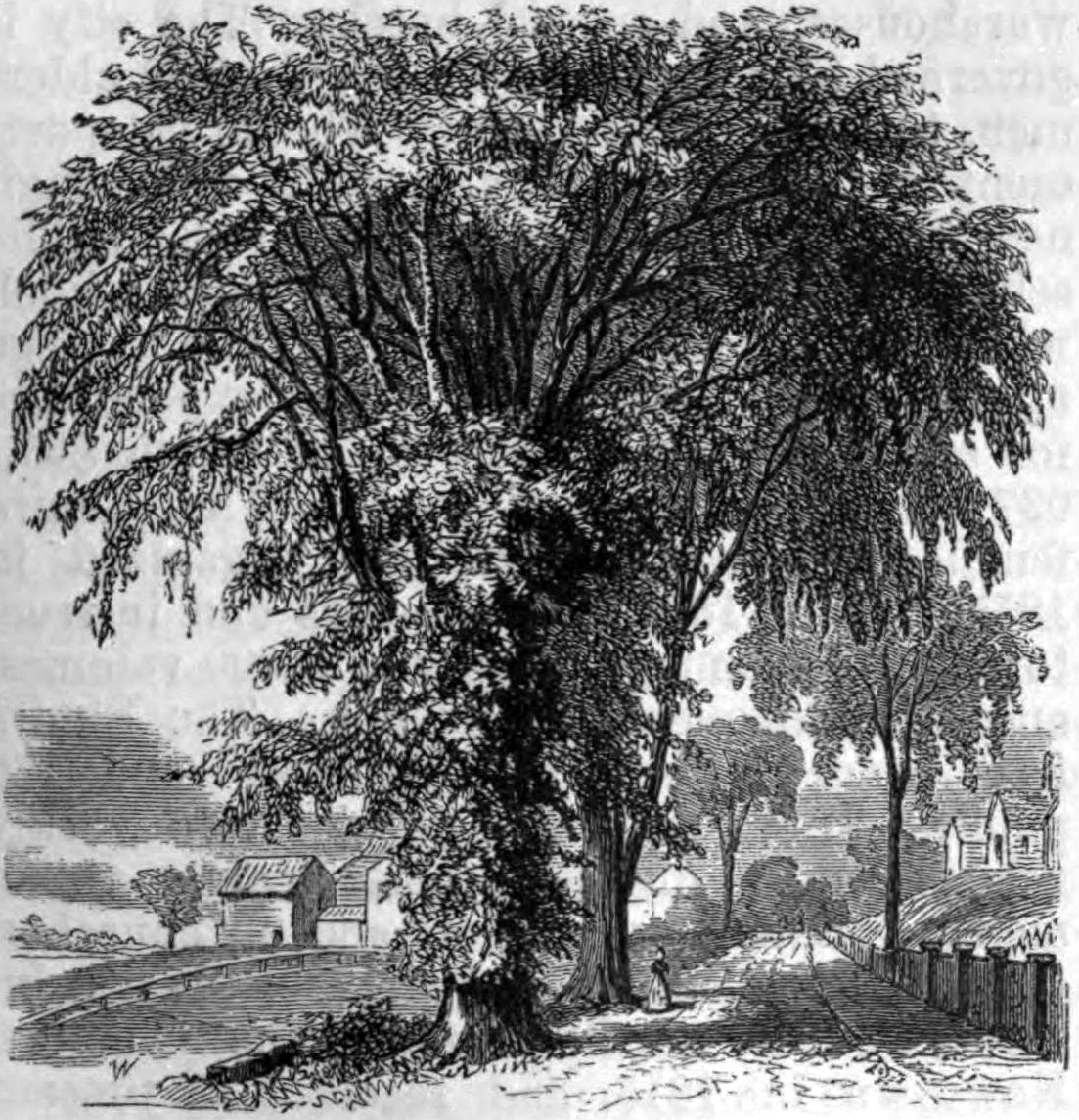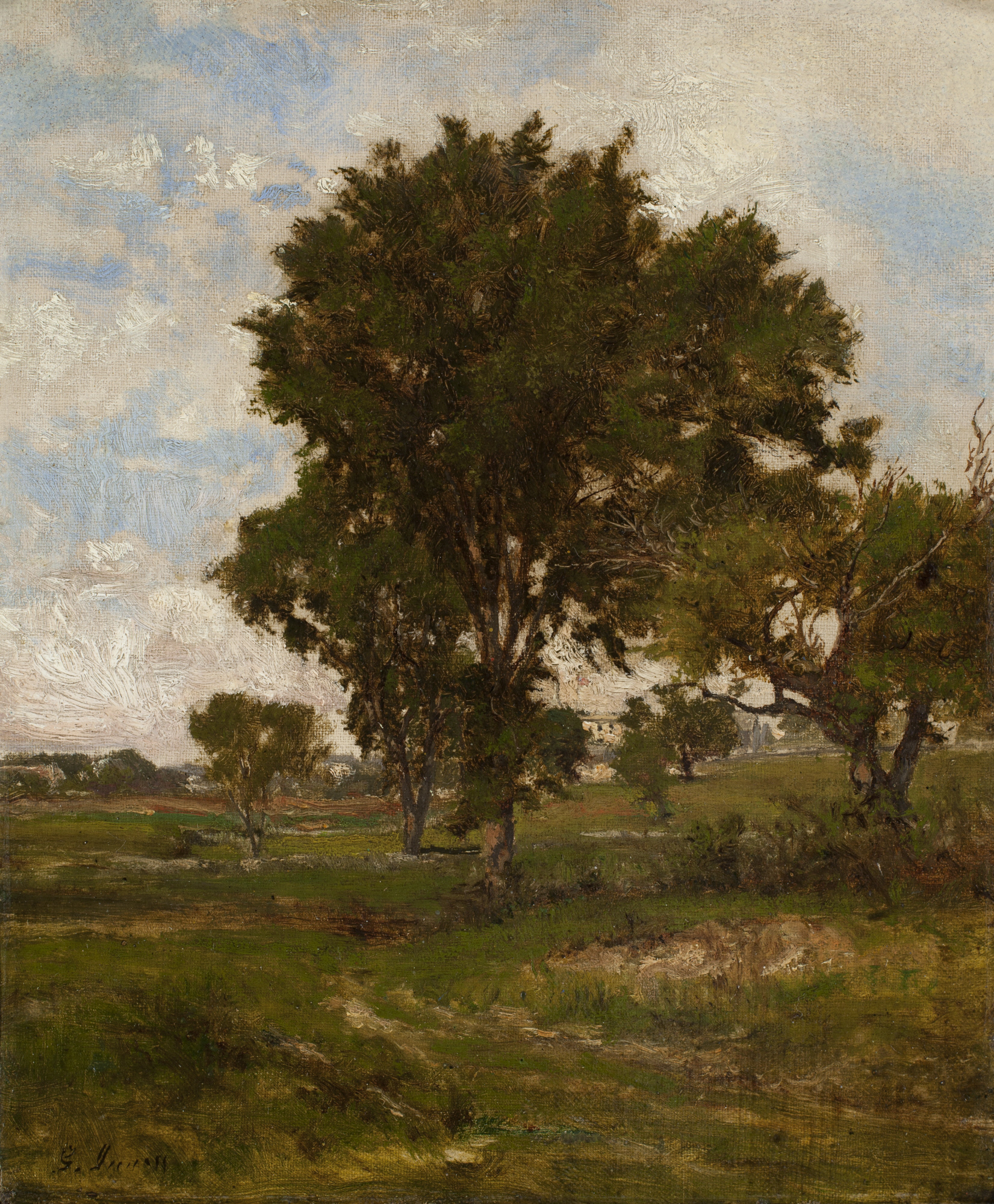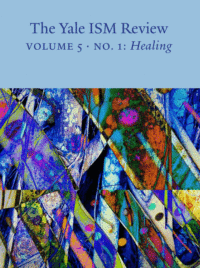Karen L. Kilcup
“This is precisely the time when artists go to work. There is no time for despair, no place for self-pity, no need for silence, no room for fear. We speak, we write, we do language. That is how civilizations heal.”
—Toni Morrison, in The Nation, March 23, 2015

First, a flashback: I am five, walking down my grandparents’ New England street. Braving July heat, I pass beneath twin rows of elms, their columns shading the cracked pavement my bare feet press. Looking up, I see the soft pendant pockets of orioles’ nests adorning the trees’ hanging branches. A flash above reveals (in Emily Dickinson’s perfect phrasing) “One of the ones that Midas touched,” the “Meteor of Birds.” And their music recalls Dickinson again: “A Troubadour opon the Elm / Betrays the solitude.”[1]
Flash forward sixty years: Green Street, as it happens to be called, has diminished shade, cast by a few aspiring choke-cherries and swamp maples. The elms are long gone, victims of Dutch elm disease; gone, too, are my grandparents. Traveling this street, I feel these absent presences like ghost limbs.
The elms fell to a fungus that scientists believe arose in Asia and was accidentally introduced into North America in the late 1920s.[2] Dutch elm disease decimated urban forests as well as the pastoral landscape that animated my childhood. In the intervening years between then and Green Street’s decline, more trees of all species have fallen, reflecting the broader fact that the news about the planet, or at least humans’ place on the planet, is not good. Because of acid rain, sugar maples, New England’s signature species, have been succumbing to stresses they would normally have withstood for as much as 400 years.
Sounding the alarm, the contemporary Cherokee writer Marilu Awiakta begins “Dying Back” with stark images:
On the mountain
the standing people are dying back—
hemlock, spruce and pine
turn brown in the head.
hardwood shrivels in new leaf.[3]
Trees or, as the Cherokee call them, the Standing People, are among the proverbial canaries in the coal mine. A highway sign at the border leaving New Hampshire and entering Maine warns that foreign firewood is prohibited: in May 2018 emerald ash borer entered the town of Madawaska, which borders Edmonton, New Brunswick, and the insect quickly moved southward.[4] The Blue Ridge Mountains are faring worse than many northern locations; the metallic green beetle that has killed many million ash trees is endemic. Scientists have warned of these and similar problems for many years.[5]

American elm (Ulmus Americana), The American Cyclopædia
Insects are not the only tree destroyers, and the loss of old trees, particularly, has long been cause for both legal action and public commentary. Even the Puritans forbade “indiscreet fyring of the woods,” and by the mid-seventeenth century, regulations prohibited indiscriminate tree-cutting in the seacoast region of what is now Maine and New Hampshire.[6] In 1844, surveying what she called Scenes in My Native Land, the writer-activist Lydia Sigourney simultaneously celebrated some of the United States’ most venerable trees and raged against settlers’ clear-cutting practices. She understood such assaults on the nation’s great forests as wholesale destruction of future generations’ heritage, warning, in her poem “Fallen Forests,” “Man’s warfare on the trees is terrible.”[7]
But Sigourney did more than warn: like Awiakta, she used her power with language to help create change. She, and many other American women writers, understood that words can, in moving us to act, advance environmental healing. Ecofeminists have long connected exploitation of the planet with exploitation of those the dominant culture designates as Others: women, people of color, the elderly, the poor, the disabled, immigrants, children, animals. Understood as closer to nature, they signify corporeality, and thus, mortality. Othering enables the culturally powerful to displace their fear of death. Restorative projects must therefore think about “the environment” from many angles. Some of the most moving and perhaps most hopeful visions have come from writers who speak to children, including many voices from what scholars designate the long nineteenth century.[8] Their work speaks to everyone, and it speaks well beyond their own time.
We need to heed these voices. Because poetry can evoke powerful emotions, including empathy for non-human presences, it offers transformative potential. Female-authored poetry has been especially effective in shaping affective responses that can move us—literally as well as figuratively—to progressive action. One writer whose work still permeates popular culture is the working-class poet Lucy Larcom. Her “Plant a Tree,” which has long stirred participants in Arbor Day celebrations across the country, begins by imagining a healing future: “He who plants a tree, / Plants a hope.”[9] Subsequent stanzas conjure other elevating effects. Trees provoke “joy,” “comfort,” “peace,” “youth,” “love”; birds “throng” to their “shelter” and voice their “bliss,” while humans rest in the “blessèd” shade. Although Larcom insists that “[g]ifts that grow, are best,” she does not say directly what readers quickly intuit: trees inspire wonder.
Because poetry can evoke powerful emotions, including empathy for non-human presences, it offers transformative potential.
Children’s voices echo this idea. Writing from North Carolina in 1910, African American teenager Christina Moody composed “The Little Seed,” whose eponymous narrator “planned of days to come, / When his body would be great and tall.” When he breaks apart, “instead of death, a pretty stem / Lifted up his little green head.” Finally, “the seed that was wee, grew into a tree / ’Twas a wonderful sight to behold.”[10] Moody’s imagination of unseen marvels unfurling over many years articulates a transgenerational standpoint that urges children and their parents to respect nature’s generative power, and intimates human responsibility for growing beings. The poem conjures children’s increasing strength—and it underscores their agency.
Moody’s final exclamation summons a communal outlook, as does an 1896 Lizette Woodworth Reese poem that embraces immigrant workers’ experiences:
A Street Scene
The east is a clear violet mass
Behind the houses high;
The laborers with their kettles pass;
The carts are creaking by.
Carved out against the tender sky,
The convent gables lift;
Half way below the old boughs lie
Heaped in a great white drift.
They tremble in the passionate air;
They part, and clean and sweet
The cherry flakes fall here, fall there;
A handful stirs the street.
The workmen look up as they go;
And one, remembering plain
How white the Irish orchards blow,
Turns back, and looks again.[11]
Reese’s poem celebrates the conjunction of labor and transcendence. Labor is heavy, but the sky is “tender” and “[t]he convent gables lift” the viewers’—and readers’—spirits. Piled high, the fallen cherry blossoms create “a great white drift” that signifies spring’s rebirth. For the worker who pauses for contemplation, they conjure “white” “Irish orchards” and a return home. Appearing during a time of intense, violent anti-Irish sentiment in the United States, the poem teaches children (and its adult readers) how the trees’ beauty inspires an ostensible Other to re-see the past and the present. As readers too turn back, and look again, they share the worker’s admiration for the trees’ insistent loveliness, and they gain an amplified understanding. In bringing people together, the cherry trees elicit a desire for continuity, for a “clean and sweet” future that embraces both people and the earth. The effects are bidirectional: trees bestow curative powers through their beauty; the beauty animating Reese’s poem promotes care for trees—and for other people.
The restorative selflessness that “A Street Scene” cultivates emerges explicitly in an 1898 poem by Charlotte Perkins Gilman. “Tree Feelings” evinces curiosity, astonishment, imagination, and exhilaration:
I wonder if they like it—being trees?
I suppose they do. . . .
It must feel good to have the ground so flat,
And feel yourself stand right straight up like that—
So stiff in the middle—and then branch at ease,
Big boughs that arch, small ones that bend and blow,
And all those fringy leaves that flutter so.
You’d think they’d break off at the lower end
When the wind fills them, and their great heads bend.
But then you think of all the roots they drop,
As much at bottom as there is on top,—
A double tree, widespread in earth and air
Like a reflection in the water there.
I guess they like to stand still in the sun
And just breathe out and in, and feel the cool sap run;
And like to feel the rain run through their hair
And slide down to the roots and settle there.
But I think they like wind best. From the light touch
That lets the leaves whisper and kiss so much,
To the great swinging, tossing, flying wide,
And all the time so stiff and strong inside!
And the big winds, that pull, and make them feel
How long their roots are, and the earth how leal!
And O the blossoms! And the wild seeds lost!
And jeweled martyrdom of fiery frost!
And fruit trees. I’d forgotten. No cold gem,
But to be apples—and bow down with them![12]

George Inness, The Elm Tree
The narrator begins with wonder and, as she imagines her own treeness with increasing intensity, expresses an ecstatic, passionate vision that ends with simultaneous plenitude and self-loss, an inevitable and ineffable elevation and bowing down.
Trees do more than offer hope: they embody a promise for the future. For beings who need oxygen, trees are literally the breath of life. Mature trees in particular perform irreplaceable ecological tasks, both for and well beyond human animals’ needs: cooling neighborhoods, offering beauty, sequestering carbon, providing habitat, feeding insects and animals, enriching the soil, fostering biodiversity, filtering pollutants. Without them, most earth-bound life could not exist. Healing and renewal, as the writers I’ve shared suggest, require that humans respect the natural world and appreciate its awe-some—and even awe-ful—power.
To be clear: the earth will heal without our help; we must first heal ourselves if we wish to continue receiving its gifts. As the poets I’ve shared insist, we must recognize our manifold affiliations, our kinships with others and our corporeal home. A nineteenth-century value, which Gilman’s poem performs so powerfully, conveys the necessary perspective most precisely: humility.
These writers’ words give me hope that we can renew our Green Streets. Although I’m not conventionally religious, I often find myself hiking in New Hampshire woods, where stone walls mark what were once fields. Maple, beech, birch, and oak shoulder aside boulders larger than houses, taller than church steeples. In the White Mountains, the trees wrap roots around rocks, reaching for the sky.
 Karen L. Kilcup is the Elizabeth Rosenthal Excellence Professor of English, Environmental & Sustainability Studies, and Women’s & Gender Studies at UNC Greensboro. Kilcup’s work includes Fallen Forests: Emotion, Embodiment, and Ethics in American Women’s Environmental Writing, 1781-1924 (Georgia, 2013), Who Killed American Poetry?: From National Obsession to Elite Possession (Michigan, 2019), and “Stronger, Truer, Bolder”: Nineteenth-Century American Children’s Writing, Nature, and the Environment (Georgia, 2020). Kilcup is a past president of the Society for the Study of American Women Writers and currently editor of ESQ: A Journal of Nineteenth-Century American Literature and Culture.
Karen L. Kilcup is the Elizabeth Rosenthal Excellence Professor of English, Environmental & Sustainability Studies, and Women’s & Gender Studies at UNC Greensboro. Kilcup’s work includes Fallen Forests: Emotion, Embodiment, and Ethics in American Women’s Environmental Writing, 1781-1924 (Georgia, 2013), Who Killed American Poetry?: From National Obsession to Elite Possession (Michigan, 2019), and “Stronger, Truer, Bolder”: Nineteenth-Century American Children’s Writing, Nature, and the Environment (Georgia, 2020). Kilcup is a past president of the Society for the Study of American Women Writers and currently editor of ESQ: A Journal of Nineteenth-Century American Literature and Culture.
[1] Emily Dickinson, “One of the Ones that Midas touched” (F1488B.1); “New feet within my garden go” (F79A), Emily Dickinson Archive, http://www.edickinson.org/editions/1/image_sets/240674, http://www.edickinson.org/editions/1/image_sets/235323. Dickinson characteristically flouts spelling norms with “opon.”
[2] “Dutch elm disease,” APS [The American Phytopathological Society], https://www.apsnet.org/edcenter/disandpath/fungalasco/pdlessons/Pages/DutchElm.aspx
[3] Marilu Awiakta, “Dying Back,” in Selu: Seeking the Corn-Mother’s Wisdom (Golden, CO: Fulcrum, 1993), 5.
[4] Ed Morin, “Emerald Ash Borer Discovered in Aroostook County,” Maine Public, May 29, 2018, https://www.mainepublic.org/post/emerald-ash-borer-discovered-aroostook-county. “Cooperative Agricultural Pest Survey (CAPS), Emerald Ash Borer (EAB), Agrilus planipennis,” Department of Agriculture, Conservation, and Forestry, https://www.maine.gov/dacf/php/caps/EAB/index.shtml.
[5] Karen Chávez, “Invasive pests No. 1 threat to WNC Forests,” Citizen Times, May 12, 2016, https://www.citizen-times.com/story/news/local/2016/05/12/invasive-pests-no-1-threat-wnc-forests/84189454/
[6] Karen L. Kilcup, Fallen Forests: Emotion, Embodiment, and Ethics in American Women’s Environmental Writing, 1781-1924 (Athens: University of Georgia Press, 2013), 84.
[7] Lydia Sigourney, “Fallen Forests,” in Scenes in My Native Land (Boston: James Munroe, 1845), 117.
[8] Although definitions vary, scholars often demarcate the long nineteenth century in the U.S. as the years encompassing independence to World War I.
[9] Karen L. Kilcup, “Education by Poetry: Robert Frost, Women, and Children,” in Robert Frost in Context, ed. Mark Richardson (Cambridge: Cambridge UP, 2014), 372-73. Lucy Larcom, “Plant a Tree,” in Over the River and Through the Wood: An Anthology of Nineteenth-Century American Children’s Poetry, ed. Karen L. Kilcup and Angela Sorby (Baltimore: Johns Hopkins University Press, 2013), 35.
[10] Christina Moody, “The Little Seed,” in Over the River, 36.
[11] Lizette Woodworth Reese, “A Street Scene,” in Over the River, 53.
[12] Charlotte Perkins Gilman, “Tree Feelings,” in Over the River, 31.
—
This material is licensed under an Attribution-NonCommercial 4.0 International License.
Recommended Citation: Kilcup, Karen L. (2019): “Looking Again: Reflections Among the Trees,” The Yale ISM Review: Vol. 5: No. 1, Article 3. Available at https://ismreview.yale.edu
